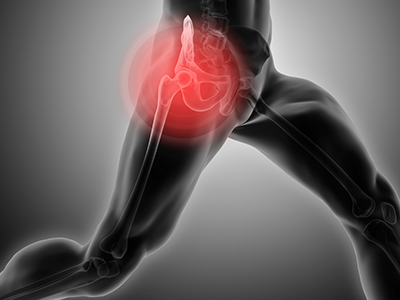Exercise Physiology For Hip & Knee Osteoarthritis (OA)

Osteoarthritis (OA) of the knee and
hip joints is very common, especially as we get older. Approximately 2.1
million Australians are affected, and about 25% of Australians over the age of
45 report symptoms. It is a condition that involves changes to the joint including
breakdown of the cartilage inside the joint, and this can then also affect the
bones and ligaments around the joint. The knee and hip are the two most
commonly involved joints because they are two of the major weight-bearing
joints in our body.
Mounting evidence clearly shows that structured
exercise should be a frontline treatment for osteoarthritis, particularly for
the hip and knee. The Royal Australia College of General Practitioners (RACGP)
put out new guidelines for the treatment of knee and hip osteoarthritis in 2018.
Within these guidelines, exercise and weight-loss were the only treatments that
were strongly recommended across all demographics. While osteoarthritic changes
to the joint cannot be reversed, exercise can effectively reduce pain and
manage the symptoms, improve your ability to perform normal daily activities, minimise
disability and improve quality of life. Exercise physiologists, who are trained
to prescribe exercise for the treatment of chronic conditions such as osteoarthritis,
are well skilled to develop and prescribe exercise programs for patients who
are suffering from knee and hip osteoarthritis.
Steps To Exercise Physiology Management Of Osteoarthritis of the Knee and Hip
Initial Assessment
Your exercise physiology treatment for
osteoarthritis of the knee and/or hip begins with a comprehensive initial
assessment of the affected joints. It starts with taking a comprehensive history
of your current symptoms as well as any previous injuries and other medical
conditions. andWe will review your current
exercise ability work with you to set goals for your treatment program. Your
joint range of motion will be assessed alongside assessment of day-to-day
movements such as stair climbing, walking and standing up out of a chair. This
assessment gives your exercise physiologist a thorough insight into how your osteoarthritis
is affecting your life and your ability to perform everyday tasks, and guides
their exercise prescription to help you achieve your goals.
Treatment Program
Your exercise physiology treatment
plan is developed based on your personal goals, the results of your physical
assessment, your current functional ability and your confidence with exercise. You
will progress through the program at an ideal pace as guided by your therapist,
and gradually advance through three main stages;
- Specific local strength
exercises for muscles around the knee and hip
- Increase joint range of movement
at the knee and hip, and also any other joints or muscles that are shown to be
restricted during your initial assessment.
- Progress exercises to
full-body exercises to increase strength and confidence in movements that
replicate activities of daily living such as stair climbing
Your treatment will usually begin
with exercises to increase strength of the muscles surrounding the knee and hip
joints to help stabilise the joints and improve your symptoms. As your strength
and pain improve your treatment will progress to increase range of motion at
the hip and knee. The final step of your exercise physiology program is to
progress again to full-body exercises that will have great carry over to
day-to-day activities.
At central Performance every exercise
physiology program is professionally designed for each individual client. Every
session is adjusted and carefully progressed according to your current symptoms,
and we consistently link your progress back to achieving your overall goals.


